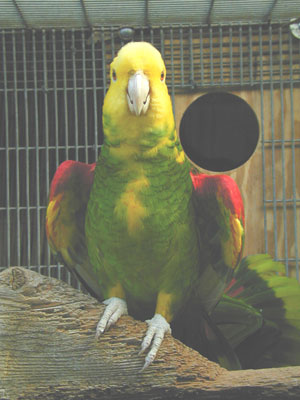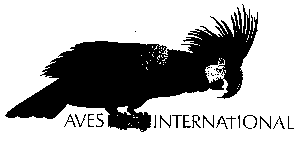 |
Amazon (Amazona oratrix) |
Sorry, we no longer breed birds.
 |
Amazon (Amazona oratrix) |

| approx. size: 14 inches/35 cm | native to: Mexico/northern C.A. | available season: summer/fall |
| min. cage size: 30" x 30" x 30" | talking ability: excellent |
|
|
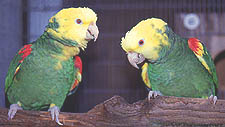 |

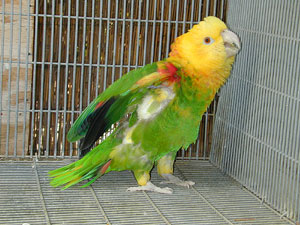 hen from pair #3 |
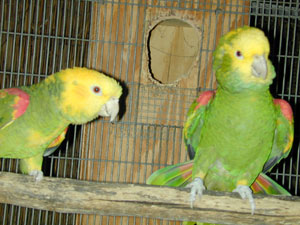 pair #130 |
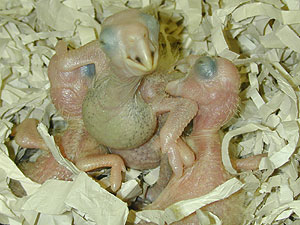 These chicks are about a 7-10 days of age. |
 Here are the same three parrots six weeks later! |
 At seven and a half weeks af age, this darling Magna baby is almost ready to fly. |
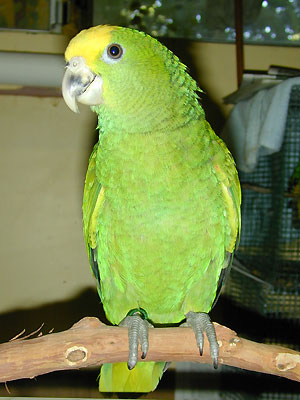 This lovely nominate Double Yellow-Headed Amazon baby is just weaned at fifteen weeks of age. |
